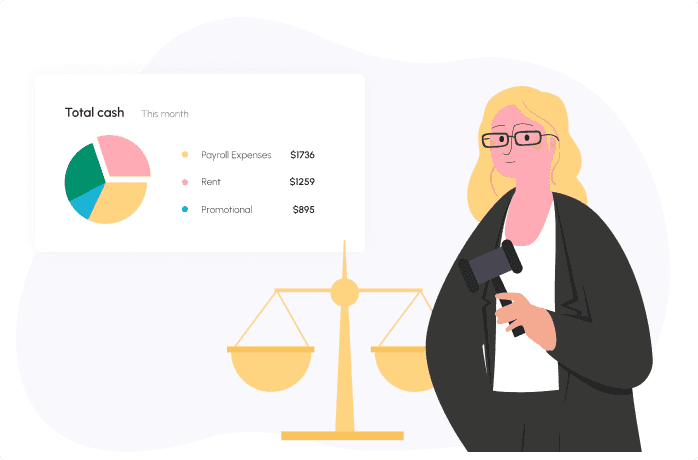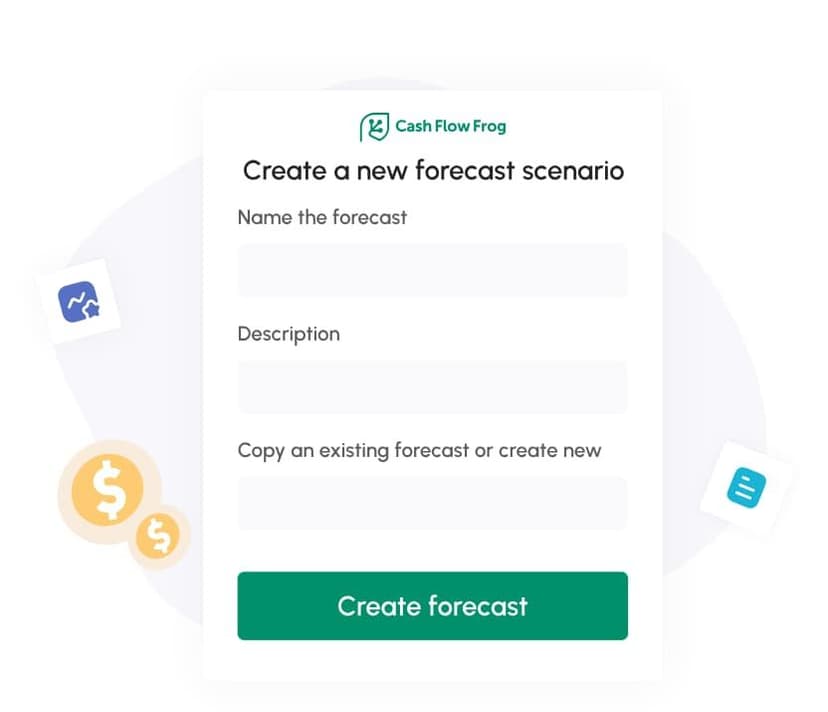How to Write a Business Plan for a Loan

In the world of business financing, knowing how to write a business plan for a loan isn’t optional; it’s the lever that gets you funded. Remember, lenders aren’t moved by ambition; they’re moved by proof. They want to see that you’ve mapped it out, crunched the numbers, and know exactly what you’re asking for. Not hope. Not hype. Just clarity, logic, and a plan that holds up.
And that is exactly what this tutorial is intended to help you with. You’ll learn what to include, what lenders actually care about, and how to craft a business plan that doesn’t just look the part but gets a yes.
What Is a Business Plan for a Loan?
A business plan for a loan application is more than just a formal requirement. It’s the clearest way to show lenders what your business does, how it makes money, and why a loan is the smart next step. This document should paint a sharp picture of your operations, financial direction, and how outside funding will fuel your progress. You’re not just asking for money, you’re laying out the logic behind the ask.
If you handed your business plan to someone who knew nothing about your company, would they get it? Would they see where your business is headed and why the loan matters? A strong plan clearly and confidently shows the strategy behind the numbers, serving both the lender and your own clarity.
Why Lenders Ask for It
Lenders ask for a business plan for loan applications to assess risk and ensure your business is viable, profitable, and capable of repayment. It’s not about trust—it’s about proof. With over 70% of small business loan applications to large banks denied, often due to unclear plans, a strong business plan shows you’ve thought it through and helps lenders see how you’ll succeed and pay them back.
How It’s Different from Other Business Plans
A business plan for bank loan differs from other plans by zeroing in on financials over vision. It does not focus on mission statements and the company culture, but more on how the loan will be applied, when the money will be paid back, and whether your business can manage it, or not, and it is more of numbers and risk than branding.
Is a Business Plan for a Loan Truly Necessary?
If you want better odds, yes. A solid plan shows lenders you’re not just passionate, you’re prepared. In reality, 30% of enterprises with business plans received financing, compared to only 12% without them.
A properly written business plan for a loan application can:
- Speed up the approval process
- Increase your chances of acquiring the amount you need.
- Help negotiate better loan terms
So, do I need a business plan to get a business loan? Yes. It shows the lender you’ve thought things through and can be trusted with their money.
Tailored for founders and finance teams
Start your free trialWhat Lenders Want to See First
Knowing how to make a business plan for a loan means focusing on what lenders care about most: profitability and repayment. Skip the backstory and clearly show how your business will make money and pay the loan back.
Here are the first two things they look for:
Is Your Business Profitable or on Track to Be?
It is not that you should be a millionaire (even though you are not yet), but at least have a plan. The lenders expect gross margins, revenue forecasts, and a net way to profit. You may be just a beginner that you are okay, but at least demonstrate that your plan is formulated with sound market research and not just a realistic forecasting.
How Will You Pay the Loan Back?
This is the million-dollar question literally. Walk them through your repayment plan. When will the money start coming in? What will your monthly expenses look like? What if sales dip, can you still manage payments? The more transparent you are, the more confident people will be.
Main Sections Every Loan Business Plan Should Include
Knowing how to write a business plan for a loan means presenting clear, well-organized information that builds credibility. Each section should tell your story with facts and structure that lenders can trust.
The sections below are essential to making your plan loan-ready from the very first page.
Executive Summary
This is the “hook” of your plan. It should sum up your business idea, funding request, and repayment plan in one compelling page. Think of it like your elevator pitch to the bank. Keep it sharp and direct.
Business Description
What does your business actually do and why does it matter? This section should give lenders a clear snapshot of your operations, leadership, and what sets you apart. Undergo more than the mere description of your product or service. Market Analysis
Show that you have been doing your homework. Explain what industry you are in and all details about your targeted customers and competitors. What are the trends you are banking on? What gaps are you filling? This section should show lenders that you understand your market landscape and that there's real demand for what you're offering.
Product or Service Details
This is your shining opportunity, where you have to reveal to the lenders what you are bringing to the table. What do you sell, and why? Speak about the actual pain that your product/service alleviates, the value that it brings, or the hole it helps to grapple with in the market.
Sales and Marketing Plan
No sales, no loan. Keep that in mind. Lay out how you plan to attract and retain customers. Will you focus on digital marketing? Word of mouth? Strategic partnerships? Also note your sales channels, your marketing budget and also the major performance indicators that you will be using to gauge the success.
Operations Plan
Outline the day-to-day in a clear way. Who is on your team? What are your operations? Lenders expect order and not disorder. Consider such logistics as your location, equipment, suppliers, and any system or tools with which you control the processes to maintain efficient operations.
Financial Projections
Can you show, with numbers, that your business is built to last? Financial projections are where you prove it.
Here’s where the numbers come in. Include:
- Income statements
- Cash flow forecasts
- Balance sheets
- Break-even analysis
In your business plan for a bank loan, you should clearly indicate not only where your business is going but also how you are planning to get there in terms of finances.
Need help building accurate forecasts that lenders can trust? Cash Flow Frog helps you create real-time, professional projections designed to support your loan request with precision and clarity.
Explore forecasting features
Try Cash Flow freeLoan Request and Use of Funds
This is the part where you ask for what you need—clearly and confidently. The more specific you are, the more serious and credible your plan appears.
Be crystal clear:
- How much do you need?
- What exactly will it be used for?
- How will it benefit your business and support loan repayment?
Common Mistakes That Can Cost You a Loan
This is where good businesses often blow their shot. Not because the idea was weak, but because the plan was. It is not your ambition that is being rejected by lenders, but confusion, red flags, and the lack of details.
The slip-ups to avoid are:
- Skimming the financials: When the financials are vague, incomplete, or non-existent, lenders can not assess the risk, and they will never guess.
- Not conducting competitive analysis: Not analyzing your competition gives the impression that you do not even know your market.
- Making an over-optimistic estimate: Estimating high growth on the basis of supposition does not create an impression, but creates alarm.
- Not remembering a clear loan repayment plan: The person granting the money asks you to borrow money, and you cannot indicate how much you will pay back, which is a reason to disappoint your request.
How to Make Your Business Plan Easy to Read
If a lender opened your plan today, would they keep reading, or move on? Remember, lenders are busy. Your job is to make that easy for them. Here’s how to make a business plan for a loan, keeping it sharp and easy to navigate:
- Use clear section headers
Guide the reader with bold, consistent headings. Make it easy for them to find exactly what they’re looking for. - Keep formatting clean and consistent
Use the same font, spacing, and structure throughout. A cluttered layout distracts from your message. - Break up long text
Stick to short paragraphs. Use bullet points or numbered lists when it helps organize ideas—but don’t overdo it. - Avoid jargon and vague language Speak plainly and professionally. Lenders want clarity, not buzzwords or vague promises.
- Stay under 20 pages
Be thorough, but don’t overload the reader. Include only what’s necessary to tell your story and support your numbers. - Proofread everything
Typos and errors suggest you’re careless, exactly the opposite of what lenders want to see. Double-check your math, too.
Tools and Templates You Can Use
A strong structure can make writing your business plan much easier and more effective. That’s where tools and a business plan template for bank loans come in.
Here are a few trusted options that can help streamline the process:
- Cash Flow Frog – A robust cash flow forecasting software designed to generate real-time projections with precision. It’s especially useful when preparing the financial section of your plan with the level of accuracy lenders expect.
- SCORE.org – Offers SBA-approved templates specifically designed for loan applications.
- Bplans – Provides a customizable business plan template for bank loans with examples tailored to a wide range of industries.
- PandaDoc – Delivers clean, professional layouts for a polished business plan for a loan application.
Each of these options supports you in how to create a business plan for a loan and helps ensure no important details are overlooked.
Need clean, professional projections to support your loan application? Sign up for Cash Flow Frog and create clear, professional forecasts that give your business plan the edge it needs.
What Happens After You Submit the Plan
You’ve submitted your business plan for a bank loan, now what? What happens next might vary a bit depending on the lender, but most follow a similar path.
Once you’ve submitted your plan, the process looks like this:
- Your loan officer reviews it.
- They follow up with questions or clarification.
- Your credit, business model, and finances are evaluated.
- You get an approval (or denial), and then negotiate terms.
- Once approved, funds are typically disbursed within 7–21 days.
Always remember to stay responsive and proactive, as the way you engage now can influence how much trust lenders place in you later.
Sign up for Cash Flow Frog
Sign up now
Current Liabilities: Meaning, Examples, and How to Calculate Them
Read more

What Is a Finance Charge? A Simple Explanation You’ll Actually Use
Read more

Current Assets Explained: Meaning, Types, and How They Work
Read more

Cash Flow Forecasting Template
Read more

Your Guide To Financial Metrics And KPIs
Read more

10 Cash Management Trends for 2026
Read more
FAQ
Trusted by thousands of business owners
Start Free Trial Now